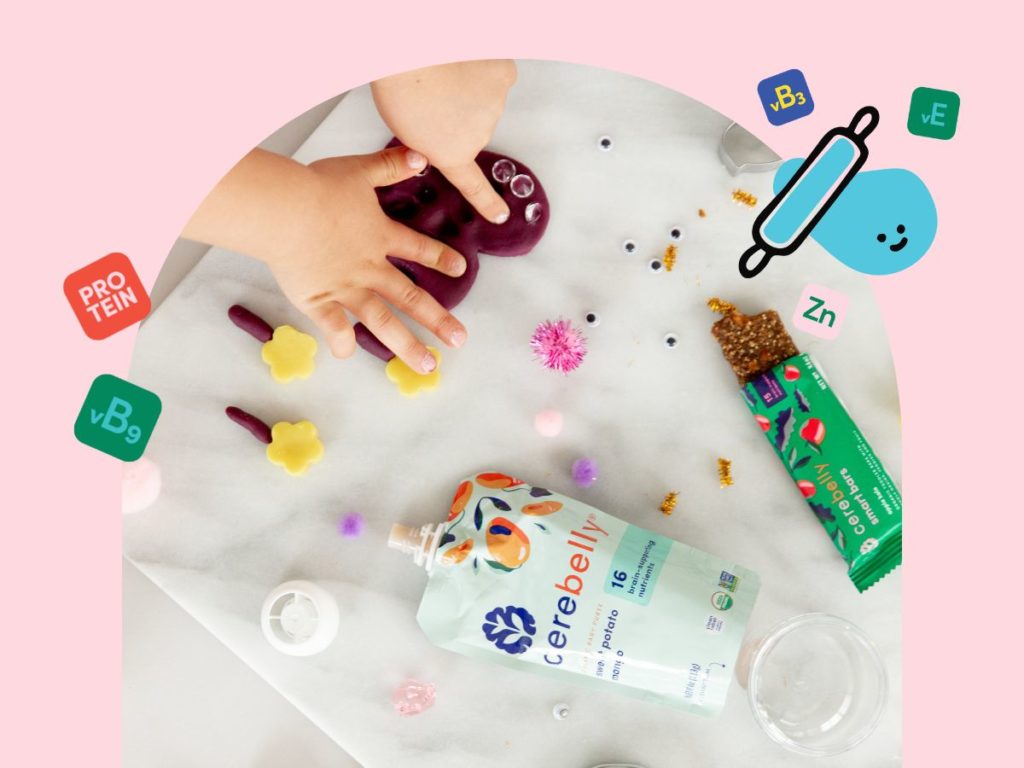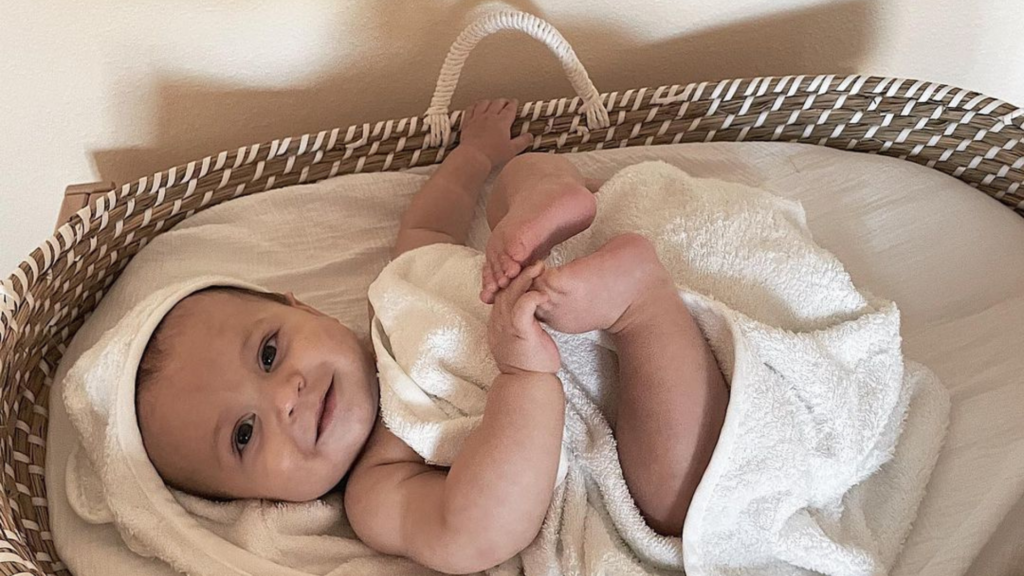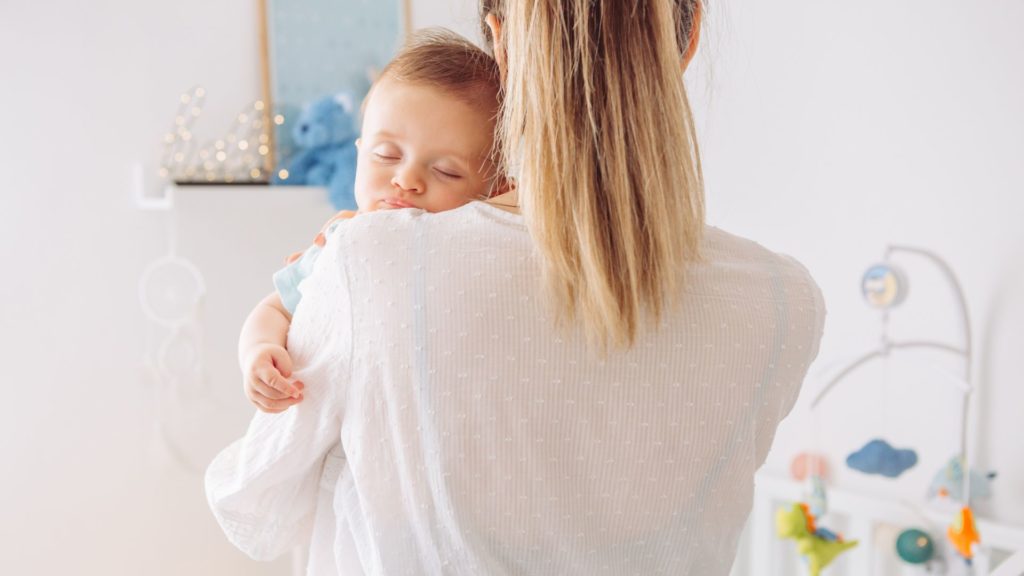A teacher's top tips for playing with dough
By Chelsea Milkman, The Dough Project™ founder & CEO
I’ll never forget my first day student teaching as an undergrad student at NYU. I was placed in a Reggio-inspired preschool in NYC (where I later got my first teaching job).
We were doing all the things to get our classroom ready for the 3’s first school visits – I remember I was using goo gone to scrub off old labels on cubbies, when the beloved school aid, Z, knocked on our door asking if we’d like her to make us some fresh playdough. Everyone immediately said yes and cheered and hugged her and thanked her profusely.
I made a mental note:
1. You can make your own playdough.
2. Teachers are very excited about this.
About an hour later, Z knocked again, this time pushing a cart that held about 10 bowls of dough. She handed us a big batch of fresh, orange, still-warm playdough before moving on to her next delivery! Again, the teachers hugged and kissed her and thanked her profusely and we all took a small piece.The warm dough felt glorious.
The next morning, we set up a few invitations to play around the room as children were scheduled to come one by one to explore their new classroom and meet their teachers. One by one, they looked around the room quietly – some more apprehensive than others. And one by one, they started talking when they sat down at the playdough table. Again, I made a mental note.
After that first day, playdough was a big part of my teaching experience.
The more time I spent with children, the more I understood why teachers put out playdough on the first day of school – and 2nd and 3rd and 4th……etc.
It’s because giving kids (and grown ups) a ball of dough is basically like giving them a big ball of comfort. It’s familiar, it’s soft, and you don’t have to “know how to play.” You can just start with a small touch.
All open ended materials, like dough, inspire creativity and critical thinking.
And because dough also has the sensory element, it can also help with focus, self-regulation, social interaction, language development, etc. Dough can pretty much be used as a tool to support ANY sort of learning. I think that’s my most favorite thing about it. It’s not a tool for X, Y, or Z. It’s simply a tool.
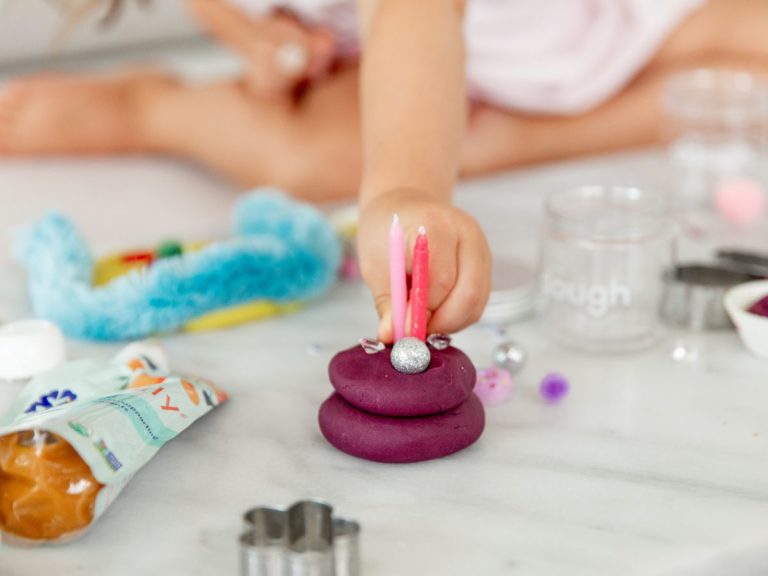
Here are my top tips for using dough the way teachers do:
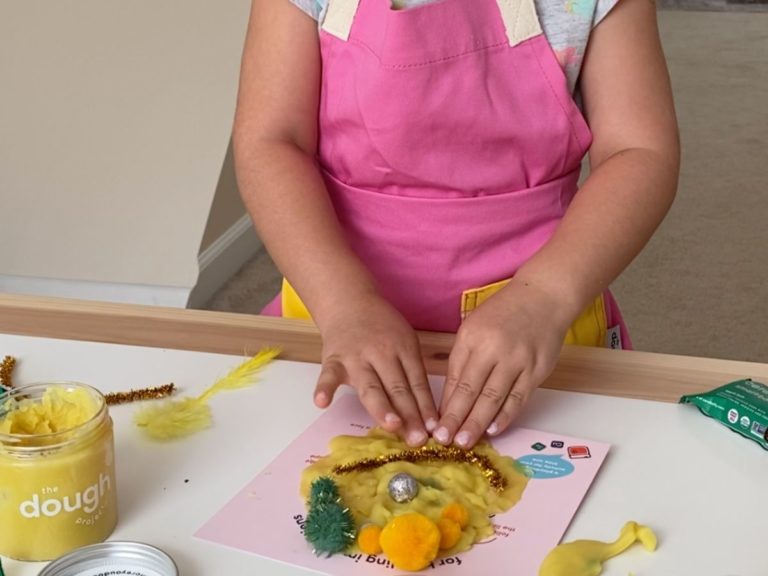
1. Playdates
Dough is a great ice breaker.
In the same way it makes children feel comfortable in a new classroom environment, it also makes them feel welcome in someone else’s home, or with a new friend.
(Bonus points for making it together during a playdate – 2 activities in one!)
2. Connection
Playing with dough is a great way to disconnect from screens and connect IRL with your little one.
It requires very little set up and clean up allowing you to maximize actual playing time. It’s an especially wonderful way to unwind and come back together after a long day apart.
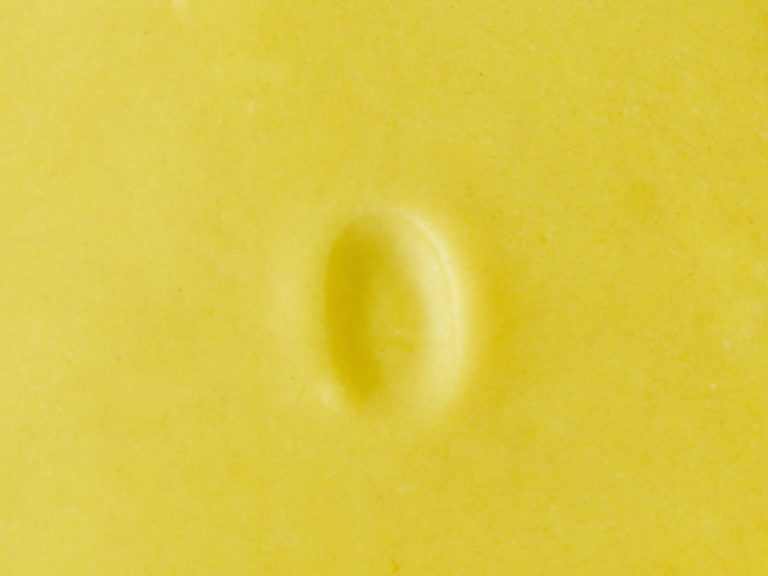
3. Reset Button
Some days are harder than others for everyone – parents, teachers and of course our kids.
As a preschool teacher, when the day felt overwhelming, we would always throw out the plan and cook something together – and usually that something was playdough! The steps became a very comforting ritual and when we were finished cooking, we had the finished warm dough to play with calmly and quietly.
It always helped.
4. Quiet Box
Keep a small container filled with little treasures – gems, q-tips, pipe cleaners, keys, and a little dough too.
In the classroom, we had these boxes available during nap time for children who woke up early or didn’t fall asleep. The box helped them stay engaged in quiet play while their friends rested – and that sort of play is restful and restorative for them too!
Need a minute? Use this as a tool to implement quiet time at home and whip it out whenever you need it.
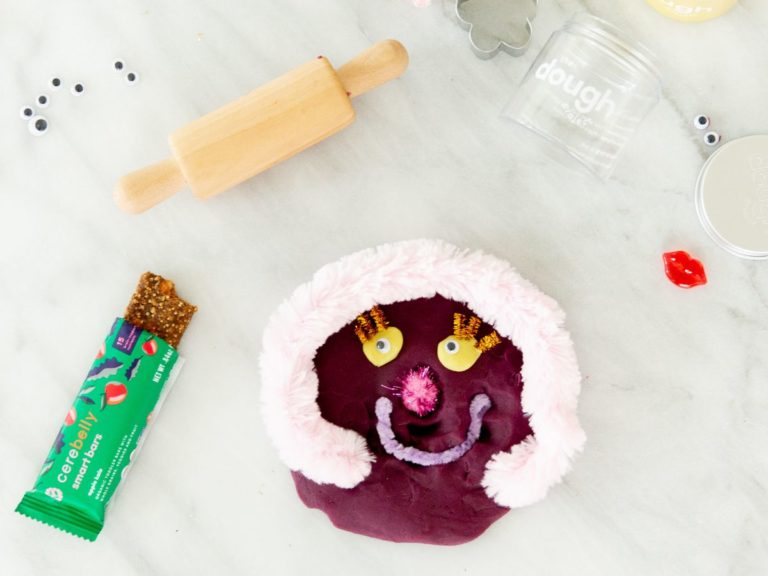
5. Learning Tool
You can use dough to support learning almost any skill. Working on counting? Dough. Color mixing? Dough. Letter forming? Dough. You can also use dough to extend learning with stories – it doesn’t need to be complex.
For example, the next time you read Blueberries for Sal, put out some blue or purple dough and a little bucket (or use your jar). Form a few small “blueberries” and make a “kurplink, kurplank, kurplunk sound as you drop them in!
See how your child reacts.
Prioritizing Play
I feel so lucky to have the opportunity to share the dough experience with families everywhere and to help bring more play into your homes.
Want to learn more? Shoot me a note! I’d be happy to help brainstorm ways playdough can support you and your little ones!
Happy playing!
XO,
Chelsea
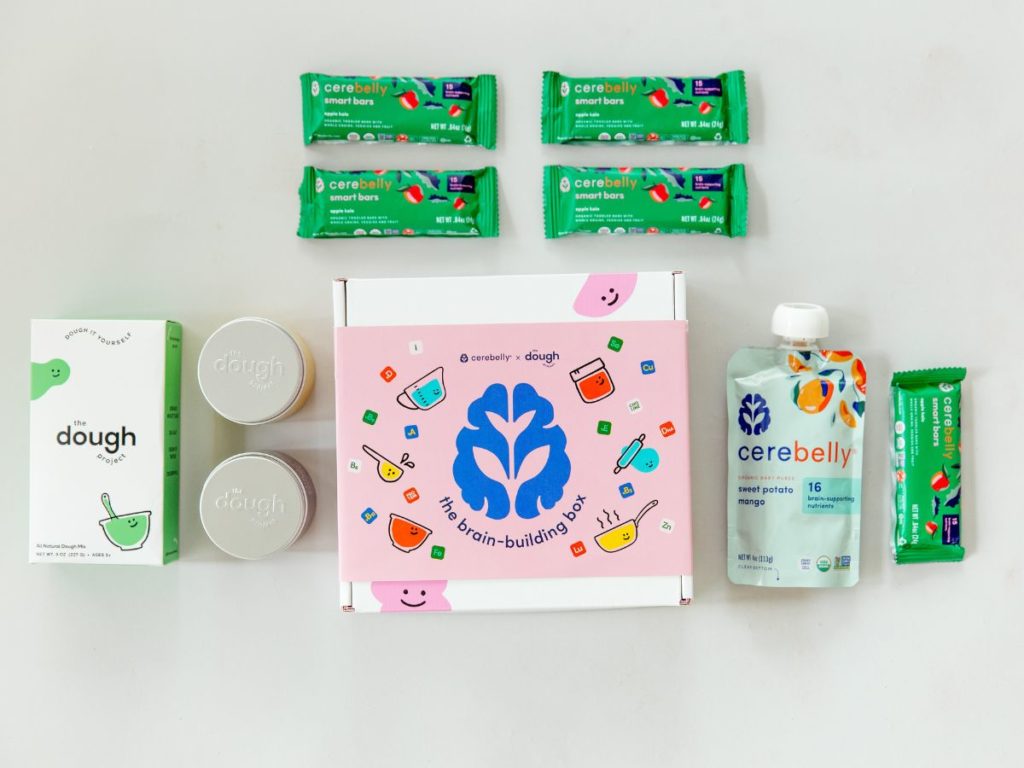
The Brain-Building Box merges the brain-boosting nutrition from Cerebelly with the playful imaginative learning from The Dough Project to create an educational, fun and interactive experience for little ones and their caregivers. This collaboration between Cerebelly® and The Dough Project™ provides children with the right tools and optimal nutrition for budding imaginations and growing brains at their most critical time.
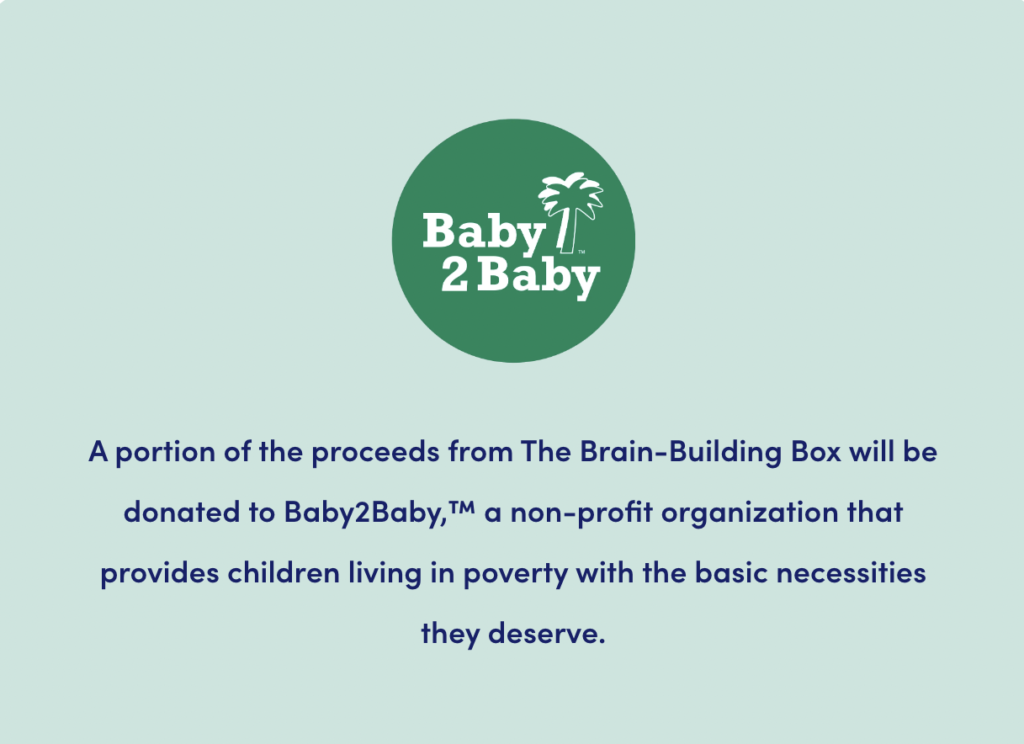
Want brain supporting baby food?
Cerebelly® is the first and only science-backed baby food that delivers whole food nutrition designed for optimal cognitive development. Check out our purees and smart bars with key brain-supporting nutrients to support your little one at every stage of their growth.
Want more playdough?
After witnessing the magic that came from playing with dough in her preschool classroom, Founder and CEO Chelsea Milkman wanted to make it easy for families to recreate the same experience at home. The Dough Project™ uses safe, high-quality products to create a world of kid-powered play that parents can feel good about.
Have more questions? Send us an email at support@cerebelly.com and we will be sure to get back to you!
